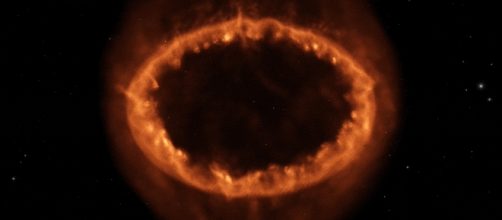A group of scientists was able to discover a large wave of hot gas in the Perseus galaxy cluster. The wave of hot gas is approximately 200,000 light years across, which is almost twice the size of the Milky. It´s believed that the wave was formed billions of years ago, following the approximation of a small galaxy cluster, causing Perseus and all of its gas particles expand into the surrounding space. Scientists believe that the merger between the small galaxy and Perseus is still occurring. Perseus, which is one of the nearest Galaxy clusters, radiates in X-rays, providing great details to scientists using Chandra X-ray observatory.
Perseus cluster
This is a cluster of galaxies in the constellation of Perseus.
It´s one of the most massive regions in the whole universe, containing thousands of galaxies surrounded by a large cloud of very hot gas. When observed in the X-ray wave of the electromagnetic spectrum, the galaxy cluster is the brightest. Right at the core of the cluster, a radio source named 3c 84 is currently spewing bubbles of relativistic plasma. The bubbles look like ripples, as they push away the hot gas emitted in the X-ray band of the spectrum.
Galaxy clusters
These are some of the largest astronomical structures consisting from hundreds to thousands of galaxies, with masses of 10 to the fourteenth to 10 to the fifteenth solar masses, hold together by the force of gravity. These structures may expand millions of years across space.
Most of the observable matter in these galaxy clusters is the intracluster medium (ICM), consisting of very hot gas with a temperature ranging between 2.15 Kev. Their diameter ranges from 2 to 10 Mpc and their velocities average from 800-1000 km per second.
The wave found in the Perseus galaxy cluster
This wave of hot gas spans 200,000 light years across the Perseus galaxy cluster. The waves are enormous versions of the Kelvin Helmholtz waves, which form normally at the interface of two liquids, when there is a difference in velocity and is the result of the cluster´s magnetic field. If too weak, the waves grow lager and if two strong, the waves wouldn’t form at all.
Observations made with Chandra
The observations made with Chandra X-ray observatory have revealed distinct features from vast bubbles that are blown away by the supermassive black hole located at the cluster´s central galaxy to a concave galactic feature known as the ¨bay.


